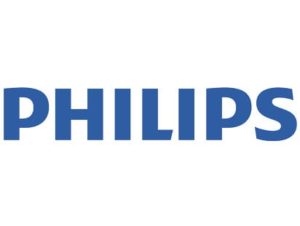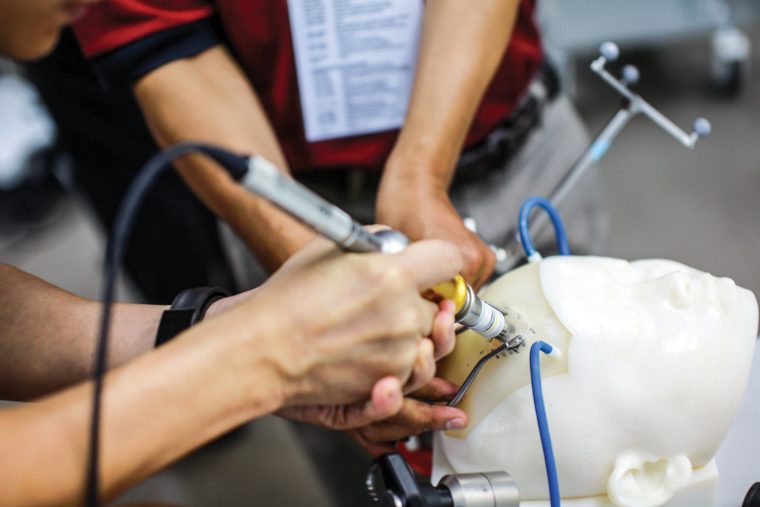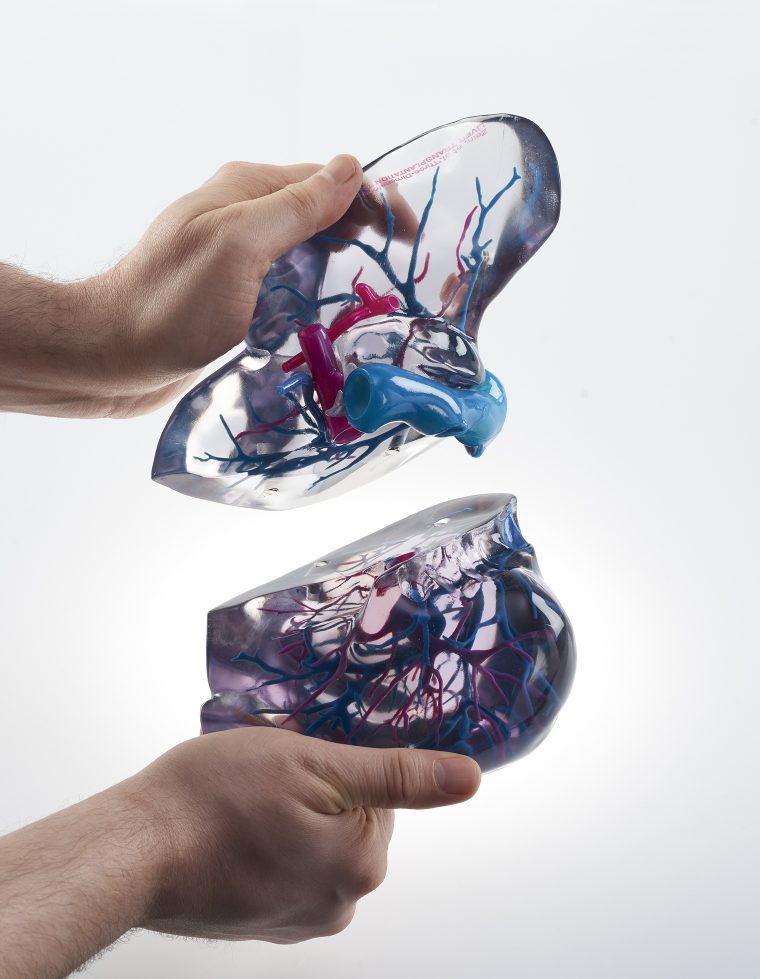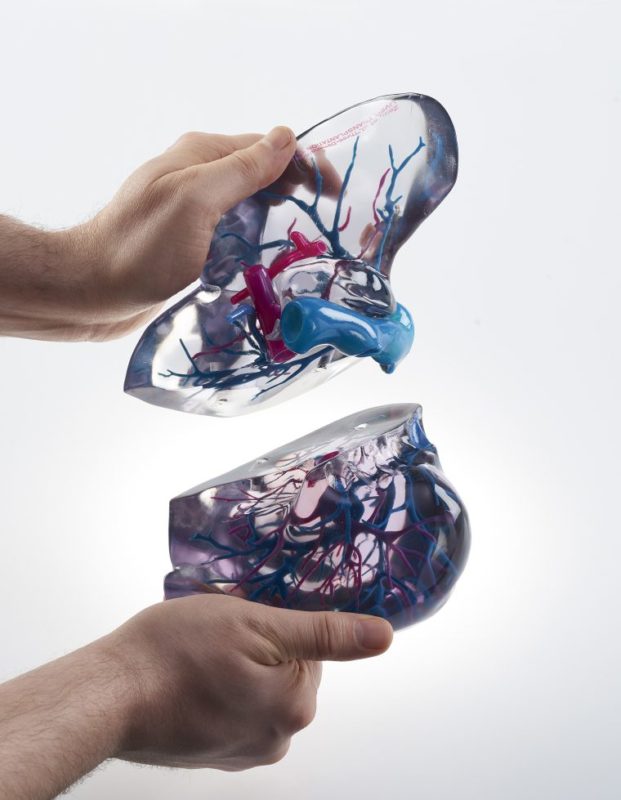Stratasys signed a commercial agreement with Philips which consists in advancing the impact and use of 3D printing in medical modeling.
This agreement follows the announcement of the availability of Philips’ IntelliSpace Portal 10, a comprehensive, advanced visualization and quantification platform.
The agreement includes virtually seamless interfacing and dedicated workflows across Philips IntelliSpace Portal 10 and Stratasys Direct Manufacturing‘s parts-on-demand service – allowing a broader range of medical professionals to improve training, research and surgical planning through 3D printing.
Interfacing with Stratasys Direct Manufacturing
Such as the agreement between Materialise and Siemens stipulated, this agreement will give Philips clinical informatics and data management customers the possibility to quickly design, order, and produce 3D printed anatomical structures on-demand.
Furthermore, the interesting part is that these anatomical creations are built from patient scans in full color and in a great number of textures using Stratasys’ PolyJet-based full-color, multi-material 3D printing solutions. The aim is really to help advance surgical techniques and allow for training and testing in zero-risk environments.

“Stratasys is committed to opening new doors for practitioners to prepare for procedures by opening data communication from the hospital-based imaging systems to the 3D printing products and services used to provide patient-specific modeling,” said Scott Rader, GM of Healthcare Solutions at Stratasys. “Philips customers can now add the impact and value of 3D printing to their IntelliSpace environments to accelerate efficiencies and advance innovation.”
 “Our interfacing with Philips IntelliSpace Portal 10 is designed to make it faster for doctors and their patients to receive customized, pre-surgical models,” said Greg Reynolds, VP of Additive Manufacturing at Stratasys Direct Manufacturing.
“Our interfacing with Philips IntelliSpace Portal 10 is designed to make it faster for doctors and their patients to receive customized, pre-surgical models,” said Greg Reynolds, VP of Additive Manufacturing at Stratasys Direct Manufacturing.
For further information about 3D Printing, follow us on our social networks and subscribe to our newsletter!






